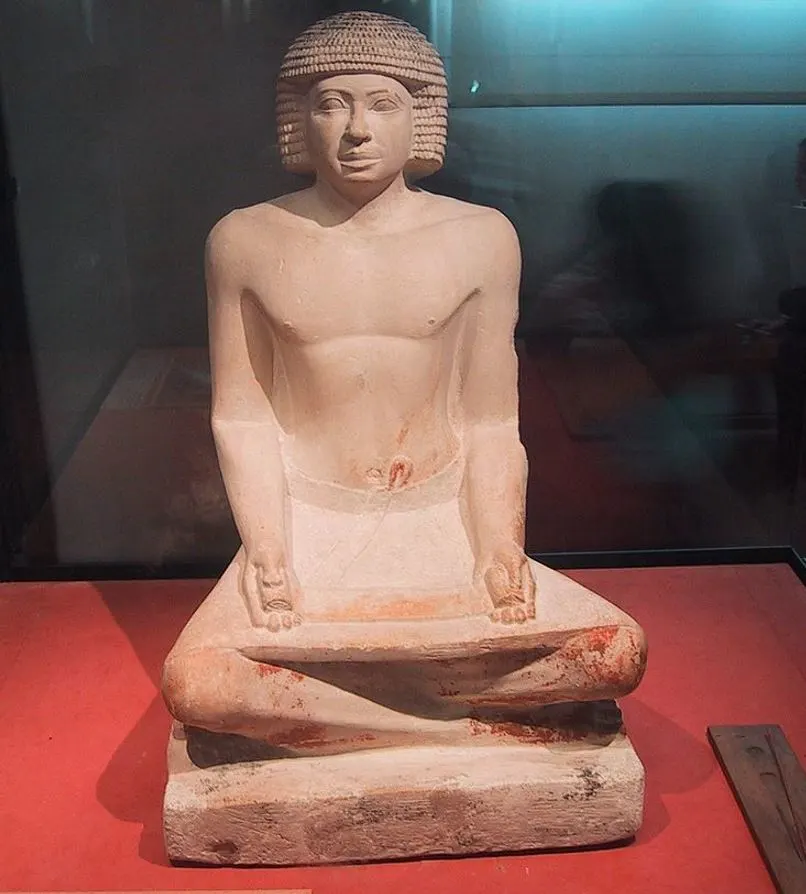The incredible gaze of this amazing sculpture at the Louvre wouldn’t make you think that it probably depicts a man who lived over 4,500 years ago.
This is not the only amazing fact about this ancient Egyptian artwork as you’ll soon discover in this article.
Let’s take a closer look at some of the most interesting facts about the Seated Scribe, one of the absolute highlights at the Louvre Museum in Paris.
1. It depicts a professional ancient Egyptian copyist
As the name of this remarkable sculpture suggests, it depicts a scribe who was earning his living in ancient Egypt.
These were professional copyists who served an important role in ancient Egyptian culture. They were used by the rulers to communicate with the population.
They served many different purposes and could be used as tax collectors, organizing special events such as wars, or assisting in large-scale construction projects such as temples and pyramids.
Because of this important role, the Pharaoh had these workers depicted in sculptures such as this one.

2. It has been dated between 2620 and 2500 B.C. (although this might be incorrect)
What’s remarkable is that the sculpture has been relatively well-preserved. This is especially fascinating because it has been dated to either the 4th or 5th dynasties of the Old Kingdom.
To give some reference, the 4th dynasty ruled between 2620 and 2500 B.C., and the 5th dynasty between 2450 and 2325 B.C.

The 4th dynasty s referred to as the so-called “Golden Age of the Old Kingdom.” It was a time of prosperity and peace and many structures were constructed.
This included the Great Pyramid of Giza and its smaller brothers nearby, the Pyramid of Menkaure, and the Pyramid of Khafre.
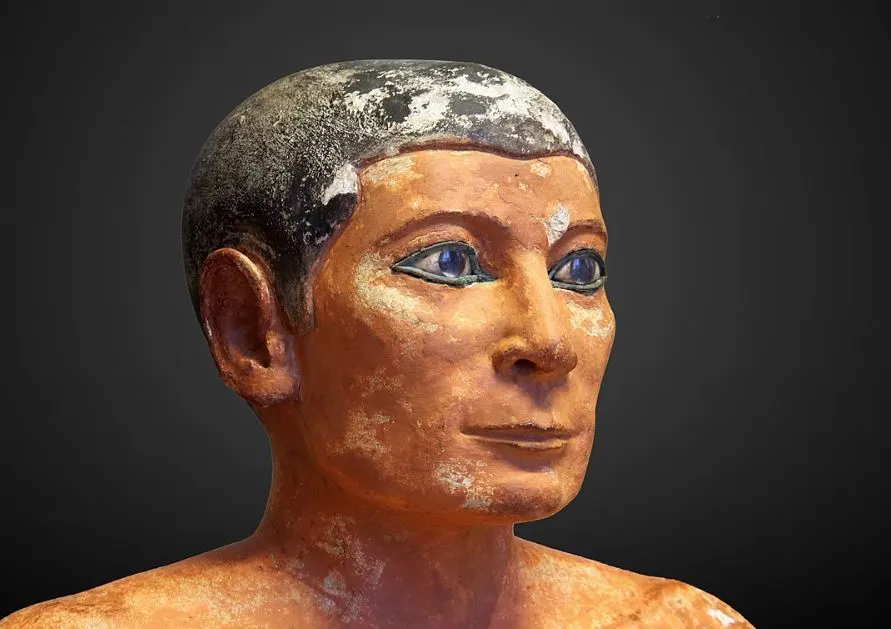
3. There’s something special about the eyes of this sculpture
The Seated Scribe is a painted limestone sculpture that has some remarkable characteristics. It depicts the scribe in a seated position with his scroll of papyrus on his lap.
This would have been the normal position for this man and his gaze makes us assume that he is waiting for somebody to tell him what to write.
His eyes are made of two different types of minerals, rock crystal, and magnesite, and are completed with a chemical solution called a copper-arsenic alloy.
Some organic material was placed at the back of the eyes to produce the blue hue of the irises of the eyes. It’s quite astounding to look at considering this was done up to 4,800 years ago.
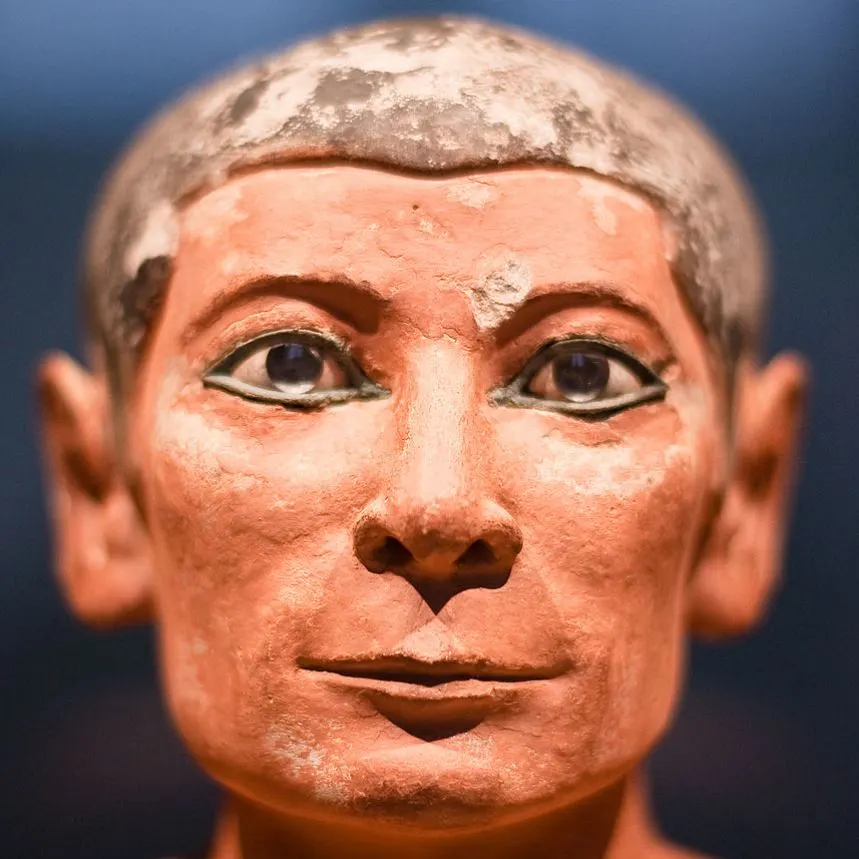
4. The most important tool of the scribe is missing
The scribe was depicted in such a way that he appears to be writing. He wears a white kilt and the papyrus scroll he works with is in position to start his work.
He won’t be able to write a whole lot, though, because the reed brush he used to write has been missing over the Millennia.
Another interesting mention about this part of the sculpture is that the scribe’s hands were carved very delicately and realistically.
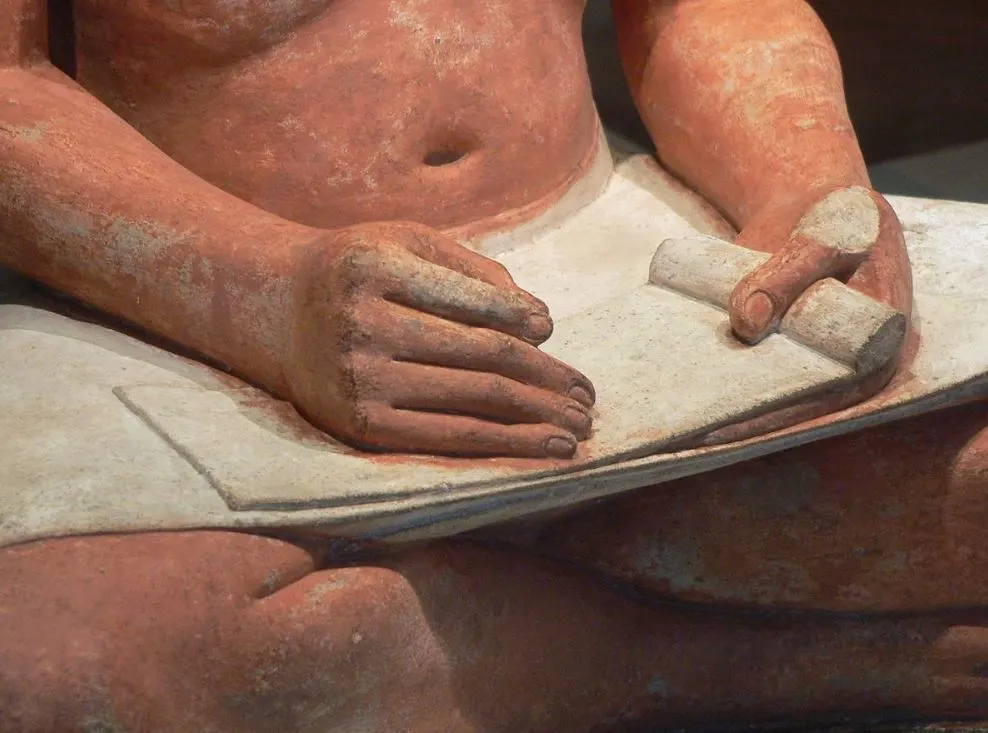
5. How big is The Seated Scribe?
The Seated Scribe is one of the most popular attractions at the Louvre Museum and that’s mainly because it has been so well-preserved for thousands of years.
It’s a relatively small sculpture that has dimensions of 53.7 × 44 × 35 centimeters (21.1 x 17 x 14 inches).
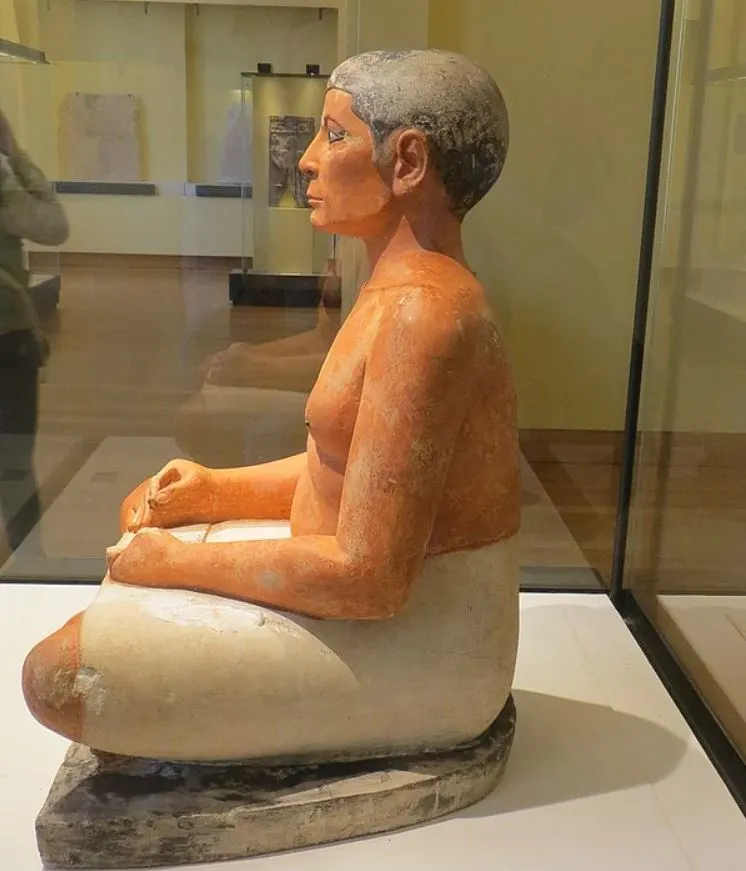
believe it or not but the nipples of this limestone structure are made of wood. It emphasized the rather chubby appearance of the man.
Some historians have referred to this man as Pehernefer, a high official in Egypt during the reigns of Pharaoh’s Huni and Sefeuru at the beginning of the 4th Dynasty.
Whether this is true remains unknown but it’s clear that this overweight man was well-off. Granted, scribes mainly sat down the entire day so he surely had little physical exercise.
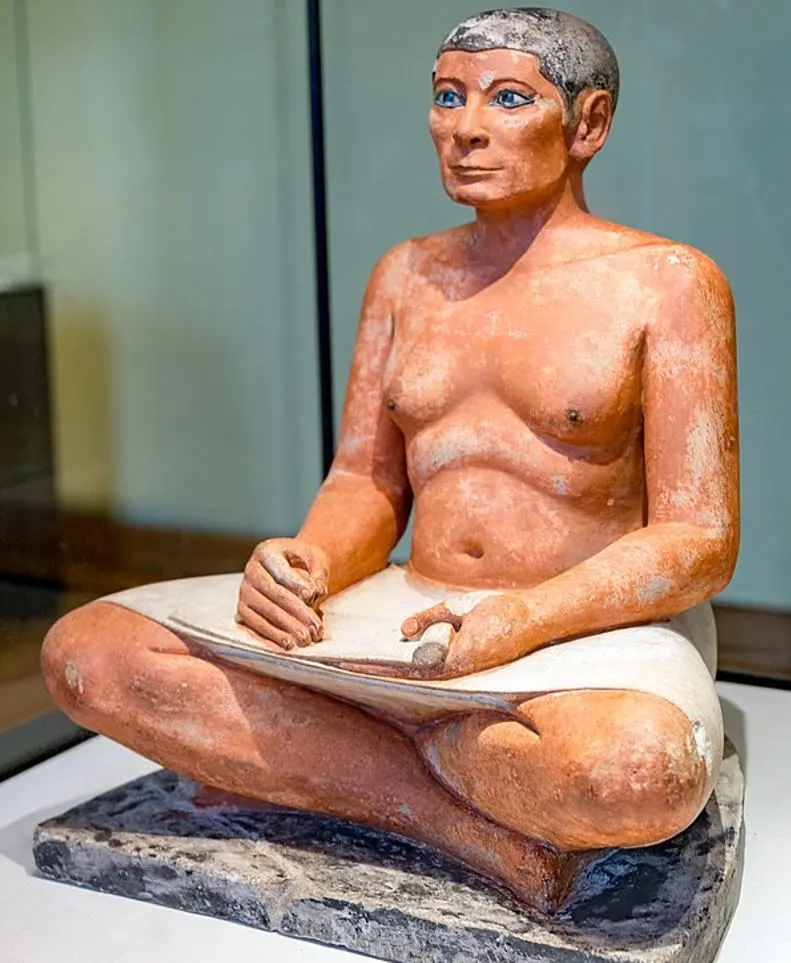
7. The sculpture was discovered at a famous ancient Egyptian necropolis
French archeologist Auguste Mariette (1821-1881) started a major project at the Necropolis of Saqqara in the mid-19th century.
This is where you can find the iconic Step pyramid of Djoser, one of the first major construction projects ever completed.
The papers that documented this project have been lost so it remains unknown where exactly the Seated Scribe was found.
It’s fairly certain, however, that it was unearthed near the Serapeum’s line of sphinxes. This happened on November 19, 1850.
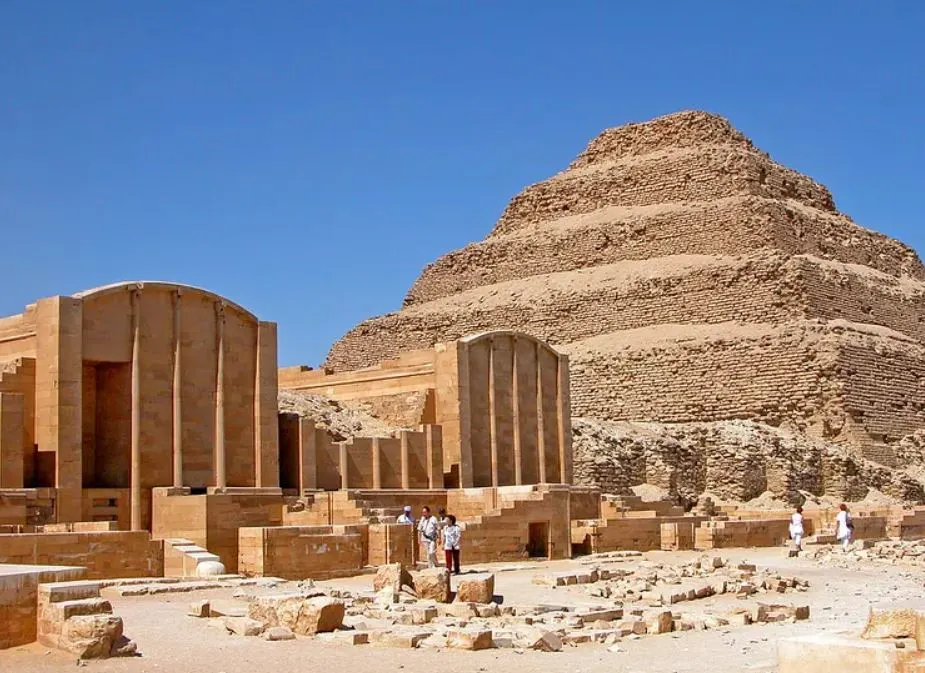
8. It’s not the only sculpture of a scribe at the Louvre Museum
The seating position of the scribe makes it likely that it dates back to the 4th Dynasty. Similar sculptures produced later depict scribes in reading positions.
There are many variations and you can admire many ancient Egyptian sculptures at the Louvre Museum, including the one below which dates back to the 5th dynasty.
The style is quite different but the output is certainly equally amazing considering the age of this artwork.
